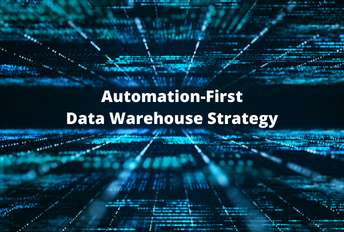
Why Automation Must Lie at the Heart of your Data Warehouse Strategy
There are a few factors that help businesses build a sustainable competitive advantage. Collecting and analyzing up-to-date enterprise data for decision-making is one of them. While there are a number of architectures that support this need, such as data lakes, data vaults, data marts, and so on, we will focus on crafting a data warehouse strategy powered by automation in this article.
Organizations today rely heavily on up-to-date data in real-time as part of their data management strategy. This means that traditional methods, such as manual ETL (extract transform load), for collecting data for BI (business intelligence), data analytics, and reporting are no longer effective. By automating their entire ETL pipelines and the data integration process, businesses can build data warehouses capable of delivering critical insights in real-time with minimal user involvement. Therefore, data driven businesses must include automation as part of their data warehouse strategy.
Let’s see how an automation-first approach applies to different aspects of a data warehouse strategy.
Ensure That Your Data Architecture Incorporates Internal Expertise
The data warehouse must be designed to serve the needs of BI and other business users. While the end-users typically know what kind of reports and analytics they need, and from which source system, to draw insights, it’s the technical/IT team that is aware of how to actually develop a solution that can meet those needs. This expertise is usually bolstered by external consultants with data warehousing experience who help architect the data warehouse for the company.

IT and Business Teams Collaborating
What happens next: never-ending back and forth within the team leading to delayed delivery and incurred costs.
However, what can be avoided, must be avoided. Businesses can easily minimize the need for external resources, or even avoid it altogether, by taking an automated approach to building the data warehouse.
Automated data warehousing aligns the architecture with the end-users’ needs by empowering them to take part in the development and design of their BI solution. By taking data warehousing away from heavy coding and providing a no-code interface, automation creates a collaborative process for data warehouse design.
Ensure That Your Data Is Clean
The importance of data quality for a successful data warehouse strategy cannot be overstated. When the primary purpose of building a data warehouse is to improve BI and the reliability of business decisions, leave no stone unturned to ensure your data warehouse only houses clean data.
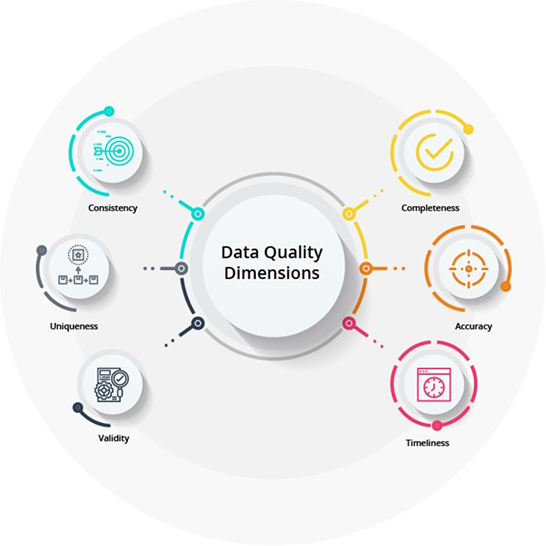
Data Quality Dimensions
It does make sense to invest in healthy data. What does not make sense, however, is investing in manual processes to improve data quality when there’s a much more viable solution at your disposal.
The process of improving data quality can be easily automated via out-of-the-box data cleansing and validation tools. Add in data profiling functionalities that allow you to monitor the quality of your data in real-time and you have everything you need to ensure the accuracy and relevance of your BI without extensive manual effort.
Data warehouse automation software available in the market are sufficiently powerful to ensure only healthy data reaches your data warehouse regardless of the size of the dataset.
Ensure that You can Deploy Your Data Warehouse to Your Platform of Choice
Everything was supposedly smooth with on-premises data warehouses and the ETL process until businesses caught a glimpse of what they could achieve with a cloud data warehouse. With cloud data warehousing, your data pipelines are no longer subject to the traditional ETL process. In fact, ELT replaces ETL in this case allowing businesses to leverage the power of the cloud infrastructure to perform transformations and scale up and down as needed.
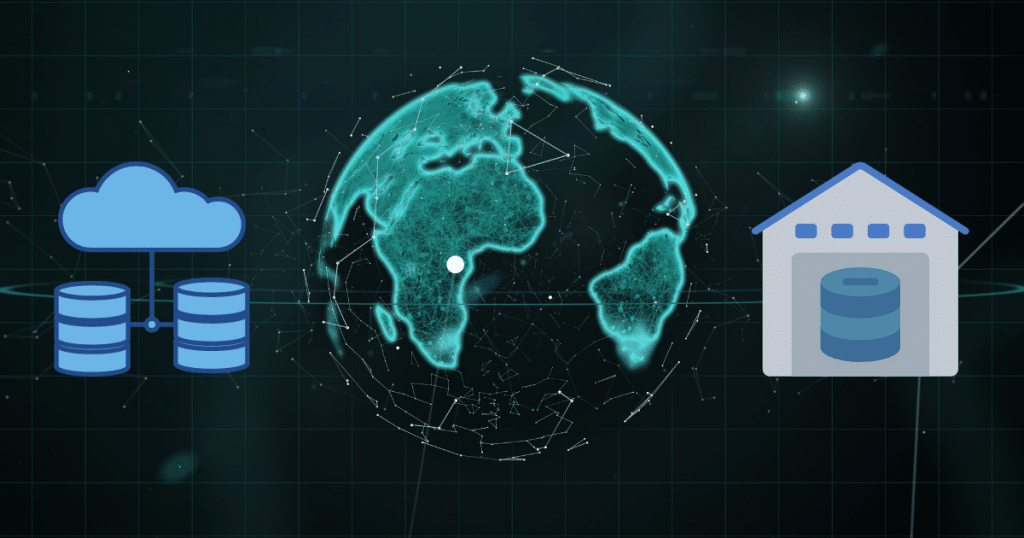
Cloud vs On-premises Data Warehouse
Now that many enterprises are waking up to the enormous potential of cloud-based data architecture, businesses will also need to ensure that their data warehouse strategy offers them the flexibility to deploy the data warehouse to either on-premises or cloud platforms.
While the cloud offers scalability and performance gains, on-premises data warehouse platforms offer full control, speed, and the highest levels of security. Many organizations forgo cloud services simply because it’s easier to comply with data governance and regulations with an on-premises data warehouse.
Factor in automation and the deployment becomes as simple as plugging in your data pipelines to the data warehouse, whether it’s on-prem or in the cloud. Data warehouse automation software enables users to do this by selecting the relevant connector (from a library of built-in connectors) without writing a single line of code.
Ensure That Your Data Is Mapped Correctly
Accurate data mapping is one of the first checkboxes to tick when implementing a data warehouse strategy. When done right, data mapping serves as a guide to understanding where the data comes from, what processes it undergoes, and where it needs to go. There are three data mapping techniques that businesses can incorporate in their data warehouse strategy:
- Manual
- Semiautomated
- Fully automated
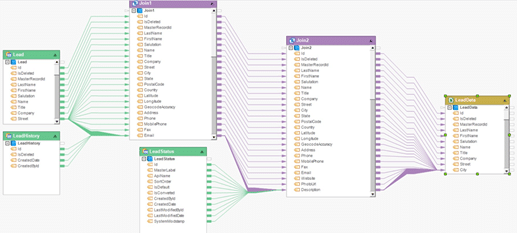
Data Mapping in Action
To ensure that business requirements are met timely and efficiently, fully automating the data mapping process is one of the most common areas to look at. Data warehouse automation software come with the ability to visually map entities involved in data warehouse pipelines via drag-and-drop, making it effortless even for the non-coders to convert unstructured data into a machine-readable format.
Ensure That Your Data Warehouse Can Scale to Handle the 5 Vs
With an ever-increasing volume of data coming in at faster than ever velocity in a variety of formats, the value (from the data) is often lost due to issues with data veracity. A data warehouse managed by technical personnel needs to be updated manually every time a new data source is added to the pipeline. Each pipeline will also need to be engineered to ensure data is brought in at a correct latency based on the velocity of data at the source. This process can easily become time-consuming if more data sources are added frequently.
As you can see, scalability is often a question mark with manually managed data warehouses. This is on top of already existing manual maintenance that is required periodically. However, these issues can be easily offset by incorporating automation into your data warehouse strategy.
For starters, data warehouse automation tools make it extremely simple to maintain and update data pipelines for users. All the user has to do is drag and drop a source connector and leverage built-in data mapping and data quality features to process and load the data. Further orchestration and scheduling of these pipelines can also be automated within the platform.
As far as scalability goes, these tools are capable of seamlessly moving the architecture to the cloud, which allows scaling up and down to meet additional demands and save costs.
How Astera Facilitates Businesses with their Data Warehouse Strategy
Astera offers an end-to-end data warehouse integration platform and ETL tool powered by automation and machine learning.
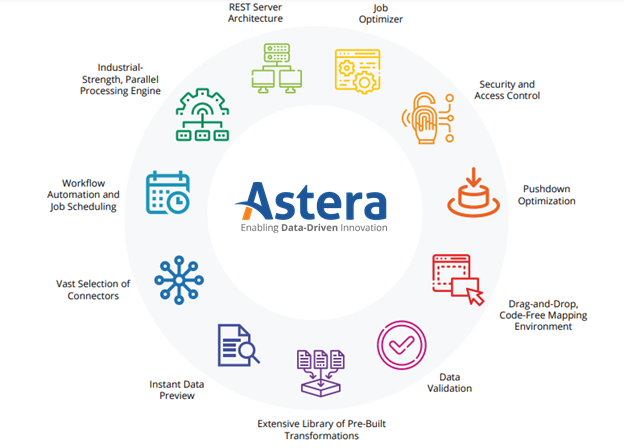
Astera Features
Regardless of the volume, variety, and velocity of your incoming business data, building a data warehouse is just a matter of drag-and-drop with Astera’s visual, point-and-click user interface. Its industrial-strength ETL Engine and Pushdown Optimization Mode (ELT) ensure your data pipelines keep flowing without a hitch even when dealing with large datasets.
With built-in connectors, you get the flexibility to connect any number of enterprise sources into your data warehouse, then deploy the solution on-premises or in the cloud, mitigating issues related to scalability, control, and performance.
Astera offers fully automated data mapping capabilities, which means that actual BI users can build entire ETL/ELT pipelines with minimal technical support. With Instant Data Preview, not only do you get to see your data at every stage, but you also get to test the validity of your data mapping in real-time, ensuring the robustness of your implementations.
Additional features like Data Profiling and Validation provide detailed information about your data quality and help ensure that only clean data is loaded into your data warehouse. To refine the quality of your business data further, you can validate incoming data and identify missing and even invalid records seamlessly with Custom Data Quality Rules.
If you’ve decided to build a modern data warehouse for your business, you know the prospective challenges your organization might have to face.
By putting automation at the center of your data warehouse strategy, these hurdles become a matter of drag-and-drop with Astera’s visual, point-and-click UI and powerful ETL/ELT engine.
Ready to see Astera in action and ensure the success of your data warehouse strategy? Schedule a demo today!
 NEW RELEASE ALERT
NEW RELEASE ALERT
 March 27th, 2025
March 27th, 2025 


